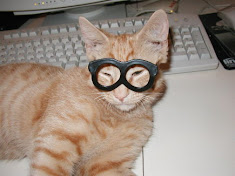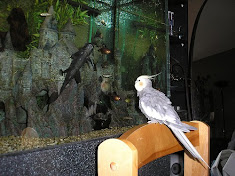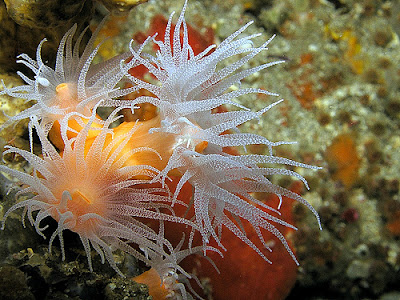Neon Tetra fish are small freshwater fishes and very popular with tropical aquarium enthusiasts because of their bright colors and ease of care.
Probably the most popular tropical aquarium Tetra is the Neon Tetra. Originally from freshwater streams in Brazil, Columbia and Peru, it's a peaceful, community fish and quite suitable for the beginner aquarist.
The Neon Tetra is a schooling fish and, as such, should always be kept with a community of 10 or so - they get lonely and sicken if alone. They prefer a somewhat dim environment, so a few floating plants to filter the light is recommended as well as a dark substrate flooring. In addition, place plenty of plants on the bottom of the tank for hiding spots- but leave enough room for some "open" swimming. Be aware that during the night, - when your Neon Tetra is hiding and resting - it will "turn off" its bright sparkling colors and it will look dull or dim. Light will gradually bring back their bright coloration.
The water temperature for Neon Tetras should be kept between 72F-78F degrees. Neon Tetras, in the wild are omnivores and eat a variety of foods including crustaceans, worms and small insects. They do love to eat, though, so be careful of over-feeding. Use a high quality flake food, with occasional supplements of daphnia, or brine shrimp for variety and they will do quite well. The pH balance of your tank should be from 5.5-7.5, which should be easy to maintain with such a nice span! Because their natural habitat has lots of rainfall, it is recommended that you replace your tank water frequently.
Neon Tetras, due to the wide range of waters in which they have been bred (whether in captivity or the wild), should be carefully acclimated into your tank to allow them plenty of time to adapt to their new home.
Neon Tetras are susceptible to - well - Neon Tetra disease. The official name is Pleistophora, which is the name of the sporozoan which causes the disease. There is no cure for the disease and the best way to avoid it is to prevent it from entering your tank in the first place. New fish should always be quarantined in a separate tank for a few days before being released into the main tank. The first sign of the disease are usually restlessness and a dull coloration. This is followed by cysts, which make the fishes body look lumpy. The Tetra will have trouble swimming and near the end the spine will become curved. By quarantining new fish you can help prevent the spread of this disease. Neon Tetra can also get Pleistophora from eating the bodies of dead fish - so be sure to remove any sick or dead fish as soon as possible.
Author Resource: Written by Anthony Higgins
Neon Tetras, with their bright colors, easy disposition and general good health are the perfect fish for the beginner in tropical freshwater aquariums. If you want to learn more visit Doctor Do Little.com for lots a tropical freshwater fish resources, including a great guide to get you up and running with your new hobby.
Probably the most popular tropical aquarium Tetra is the Neon Tetra. Originally from freshwater streams in Brazil, Columbia and Peru, it's a peaceful, community fish and quite suitable for the beginner aquarist.
 |
| Black Neon Tetra and Cardinal Tetra by fro_Ost |
The water temperature for Neon Tetras should be kept between 72F-78F degrees. Neon Tetras, in the wild are omnivores and eat a variety of foods including crustaceans, worms and small insects. They do love to eat, though, so be careful of over-feeding. Use a high quality flake food, with occasional supplements of daphnia, or brine shrimp for variety and they will do quite well. The pH balance of your tank should be from 5.5-7.5, which should be easy to maintain with such a nice span! Because their natural habitat has lots of rainfall, it is recommended that you replace your tank water frequently.
Neon Tetras, due to the wide range of waters in which they have been bred (whether in captivity or the wild), should be carefully acclimated into your tank to allow them plenty of time to adapt to their new home.
Neon Tetras are susceptible to - well - Neon Tetra disease. The official name is Pleistophora, which is the name of the sporozoan which causes the disease. There is no cure for the disease and the best way to avoid it is to prevent it from entering your tank in the first place. New fish should always be quarantined in a separate tank for a few days before being released into the main tank. The first sign of the disease are usually restlessness and a dull coloration. This is followed by cysts, which make the fishes body look lumpy. The Tetra will have trouble swimming and near the end the spine will become curved. By quarantining new fish you can help prevent the spread of this disease. Neon Tetra can also get Pleistophora from eating the bodies of dead fish - so be sure to remove any sick or dead fish as soon as possible.
Author Resource: Written by Anthony Higgins
Neon Tetras, with their bright colors, easy disposition and general good health are the perfect fish for the beginner in tropical freshwater aquariums. If you want to learn more visit Doctor Do Little.com for lots a tropical freshwater fish resources, including a great guide to get you up and running with your new hobby.


























